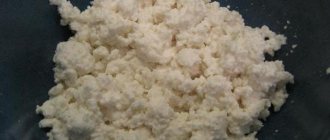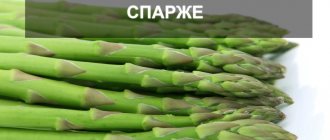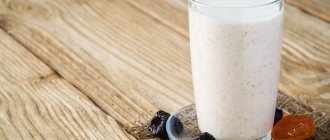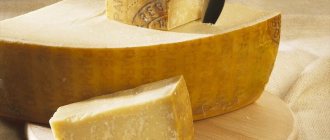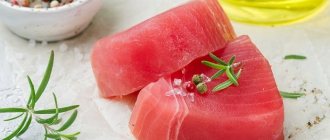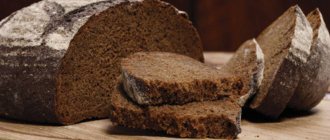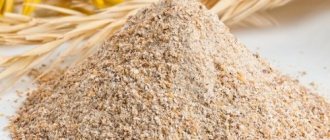Cottage cheese belongs to the category of those food products that have been known to mankind since ancient times. It is useful as a supplier of useful substances and microelements to the body, including calcium, which is important for health.
This natural product is used as part of many diets and is used to treat certain diseases.
Considering these factors, it is difficult to doubt the beneficial properties of cottage cheese and its combination with BJU. It is important to consider the composition of the product. One of the most beneficial for humans is fermented milk product, the fat content of which is 5%.
Calorie content and nutritional value of cottage cheese 5 percent
This product option, the most convenient for inclusion in the diet of a healthy lifestyle supporter, contains only 121 kcal per 100 grams. This amount contains about 15 grams of protein, 5 grams of fat and 4.5 grams of carbohydrates.
If you eat this amount for breakfast, your daily protein requirement will be fulfilled by 23%. Indicators for fats will be 18% of the daily value and about 17% of the daily value of carbohydrates.
Calorie content and BZHU of cottage cheese of other fat content
The calorie content and BJU of product variants with other fat content levels may differ:
- The low-fat version becomes the minimum option. It contains from 80 to 85 kcal. The fat-free product contains more than the usual amount of protein. Having eaten only 100 grams, the norm for knocking on the amount of protein is fulfilled by 25-27%. It contains almost no carbohydrates.
- The option with a fat content of 9% is very popular. When calculating BZHU, a serving is from 20 to 22% of the daily value of proteins. Fats also make up about 20% of the daily value, about 18% of the daily value will be carbohydrates. The calorie content of this option reaches 135 kcal.
- Many people from childhood learned about delicious homemade varieties, the fat content of which is about 20-25. According to BJU standards, the amount of proteins in them is noticeably reduced. Almost doubles, and the percentage of fats and carbohydrates increases similarly.
Note! Supporters of a healthy diet and dietary fat are recommended to choose options with 5% or 9% fat content. A higher percentage can lead to weight gain. A fermented milk product that contains no fat is practically not digestible.
Types and calorie content of cottage cheese
It is absolutely impossible to talk about how many calories are in cottage cheese in isolation from the type of fermented milk product. The varieties, in turn, completely depend on the fat content - that very “percentage” indicated on the packaging. It means how many grams of animal fat are contained in 100 grams of the finished product. Accordingly, the fatter it is, the higher the calorie content.
According to this parameter, cottage cheese is divided into the following varieties.
Low fat
This is not a separate variety, but a whole group, which includes cottage cheese with a fat content of up to 1.8%. For convenience, we will immediately indicate its nutritional value. The calorie content per 100 g of product is indicated, as in the case of fat content in cottage cheese:
- 0% – 71 kcal,
- 1% – 79 kcal,
It is worth understanding that calorie content depends not only on the fat content, but also on the raw materials used and the protein it contains. In this case, the raw material is low-fat milk.
Low-fat cottage cheese is very well absorbed by the body, so it is recommended for dietary nutrition. For example, cheesecakes or casseroles are prepared from it, which are so loved by visitors to gyms and fitness clubs. They taste practically no different from dishes made from fattier varieties, but with a strict calculation of BJU, the calorie content of 1% cottage cheese looks much more attractive.
Low-fat
The next group is very arbitrary, since it is very rarely found on sale, but is limited to a fat content of 2-4%. This cottage cheese is more filling and, due to the increased percentage of protein in the composition, more nutritious. In principle, it can even be recommended to those who watch their figure, but do not adhere to an extremely strict diet. At the same time, dishes from it can be prepared approximately the same.
Most often you can find 2% cottage cheese in stores. Its nutritional value is 103 kcal.
Light (classic)
Classic is usually called a composition with 5% fat content. It is consumed as an independent dish and is actively used in cooking, supplemented with vegetables, herbs, berries or sweet fruits. It is used for making casseroles, and also as a filling for pies, pancakes or snacks.
Calorie content of 5% cottage cheese – 121 kcal.
Bold
This is the name of a product with a fat content of 9%. Despite almost twice the nutritional value, its uses are approximately the same: filling for pancakes, casseroles, puddings, cheesecakes, cheesecakes.
The calorie content of 9% cottage cheese is expected to be higher - 159 kcal.
Fatty
Looking at the fat content of semi-fat cottage cheese, it is easy to guess that the animal fat in this variety is 18%. And indeed it is. Its structure is very thick, sticky, so it makes good pancakes, Easter cakes, flourless casseroles, cheesecakes, cakes, buns and other baked goods.
The nutritional value of 100 g of product is impressive - as much as 232 kcal - approximately 10% of the total daily calorie intake for an adult.
Meals where it is convenient to eat cottage cheese
A feature of this product is its versatility. This product option is recommended to be included in the diet at any time of the day. It can be an excellent healthy breakfast option. Light and low-fat varieties can be introduced into the diet in the afternoon. This product is not stored in fat mass.
Options for eating fatty varieties
Rustic varieties of this dish with high fat content can be healthy and used in everyday nutrition. The only recommendation is to use it in the first half of the day.
Fat cottage cheese is ready to become an independent dish or be included in baked goods or desserts.
Composition and beneficial properties of 5% cottage cheese
It is the fermented milk product with 5% fat content that is among the most convenient options for consumption:
- It is rich in large amounts of easily absorbed calcium.
- It also contains iron, sodium, potassium and phosphorus. The combination of these components helps strengthen bones.
- Cottage cheese 5% fat helps remove excess water from the body.
- The composition includes a useful complex of B vitamins, vitamins A, E, PP, D.
- Amino acid bacteria in its composition normalize the digestive system.
- This product is best consumed as food without preliminary heat treatment, which significantly reduces its beneficial properties.
Beneficial features
Cottage cheese is an indispensable product for children and pregnant women. It is not contraindicated for older people because it does not contain purine, unlike meat.
Cottage cheese 5% is included in diets and is recommended for people with intestinal disorders or digestive system disorders. You can consume 300 grams of cottage cheese per day. It is recommended for patients with tuberculosis, rickets, for bone fractures and bruises, for the renewal and strengthening of bone and muscle tissue, atherosclerosis, for blood pressure, problems with the cardiovascular system, kidneys and liver. Due to the high content of casein and lactose, cottage cheese is well digestible and nourishes the body.
Harm from eating cottage cheese
Surprisingly, even such a useful natural product can in some situations cause harm to the body.
Contraindications include:
- Individual intolerance
- People suffering from atherosclerosis are advised to reduce the amount of protein in their food due to this disease.
- Not recommended for exacerbations of gastritis or other diseases of the gastrointestinal tract.
Note! This product is dangerous to eat if it is not fresh. This can cause serious poisoning.
Features of the 5 percent product
5% cottage cheese is very useful, the chemical composition and nutritional value of which are harmoniously combined.
Low calorie content and traditional beneficial qualities make this product indispensable for dietary nutrition. It is recommended for children from six months. Due to the fact that the fat content of cottage cheese is only 5%, it is well absorbed by the child’s body, and at the same time it has a supply of calcium, phosphorus, vitamins, as well as other substances useful for children.
It is good for older people, as it contains a small amount of saturated fat, as well as for those who suffer from chronic gastrointestinal diseases. Several factors are important here: neutral acidity and the presence of pepsins, as well as a composition that is gentle on the stomach.
This product is used in many diets for weight loss; the nutritional value of this type of cottage cheese is only 121 kcal per 100 grams. Thus, the famous “Kremlin diet” recommends using it.
The use of cottage cheese in dietetics
The unique properties of cottage cheese include ease of use in dietetics. It is useful with a high degree of saturation. Brings a large amount of vitamins and microelements beneficial to the body in one meal. The product is often used as a basis for diets.
Proponents of a healthy lifestyle offer several options for dietary restrictions:
- Three-day, using only cottage cheese for food. A day you should consume about 800 grams of a product with 5-9% fat content and water or tea without sugar. Allows you to reduce weight by 3-5 kg.
- A seven-day cottage cheese diet based on the inclusion of fermented milk products, fruits and vegetables in the diet helps reduce body weight up to 8 kg per week.
- A diet for 7-10 days of cottage cheese and kefir or cottage cheese and green tea with the inclusion of fruits and vegetables in the diet.
There are many options. They are effective and help you lose weight. At the same time, the feeling of hunger is almost invisible, the product satisfies well. It is beneficial for the stomach and gastrointestinal tract.
Good to know! A special feature is the ability to normalize metabolism, speed up metabolism and normalize the functioning of the central nervous system. Another advantage is the willingness to act as a natural diuretic.
Cottage cheese recipes
The fermented milk treat can be used on its own, without additives.
You can also include among the delicious and healthy dishes:
- Preparation of curd paste with the addition of herbs and cucumber. For preparation, use 200 grams of fermented milk product, one grated cucumber, finely chopped herbs, salt, pepper. Can be used to make healthy sandwiches or just as a snack.
- Carrot-curd casserole becomes a healthy and tasty dietary option. To prepare it you will need 1 egg, two large carrots grated, 200 grams of cottage cheese, salt and sugar to taste, 2 tablespoons of flour. All components are mixed, placed in a mold and baked in the oven for about 30 minutes over medium heat.
- Baked apples with cottage cheese added to the middle become a low-calorie and healthy dessert. To prepare such a delicacy, it is enough to take about 5-6 medium-sized fruits and remove the core. The space is filled with cottage cheese. You can add a little sugar and cinnamon to it. Bake in the oven for 20 minutes over medium heat.
In conclusion, it is worth recalling the benefits of this unique fermented milk product. It is easy to prepare and unique in its composition of useful vitamins and microelements.
This literally recommends trying the cottage cheese diet at least a couple of times in life to every supporter of healthy eating and healthy eating. It is optimal to practice this style of eating 2-3 times a year.
Application
Cottage cheese 5% is considered a completely dietary product; it is used in preparing dishes for people with diabetes. Use it to make delicious cake layers, cheesecakes, brownies, casseroles and cottage cheese desserts. Cheesecakes made from fresh cottage cheese will perfectly replace store-bought cookies. Cottage cheese is added to the dough for yeast pies, buns, and Easter cakes. For example, the famous Easter cottage cheese with candied fruits, poppy seeds, cream, chocolate.
Cottage cheese is versatile in preparation; it can be baked, used as a filling and eaten raw.
Market Analytics
- 2020: an unprecedented test for the global cosmetics industry
- Top 10 Cosmetic Research and Development of 2021
- 2020 in the beauty industry – innovation without borders
Convenient search for beauty salons on our website
Beauty salons in Moscow Beauty salons in St. Petersburg Beauty salons in Ekaterinburg Beauty salons in Novosibirsk
Latest blog posts on our website
- Naturecream / Esterified oils
- Naturecream / Arnica - the magical plant of alchemists
- Naturecream / Tremella Extract - Snow Mushroom Detox for Skin
- Prostye-sovety / How to visually enlarge your lips with makeup
- Naturecream / Apricot kernel oil for face
- Naturecream / MATRIXYL3000 - the best skin elasticity stimulator
- Naturecream / SPF in Natural Oils
- Naturecream / Geranium (Pelargonium) oil for skin health and beauty
- Prostye-sovety / Save on a beauty salon: procedures that can be done at home
- Naturecream / Growth Factor - brings back youth?
Latest forum topics on our website
- Natalya / How to properly make a gelatin mask?
- Mrs._Smith / Badly sunburned! What to do?((
- Ice / Is it necessary to combine fitness classes with a diet?
- Antonova / What can be used for hair loss?
- Radio operatorKat / Who was on a protein diet?
Other articles in this section
| Comte cheese Comte cheese is a French hard cheese made from high-quality unpasteurized cow's milk. The birthplace of this type of cheese is the Franche-Comté region in France on the border with Switzerland. The cheese has a slightly sweetish taste with a nutty tint and a rich aroma. The texture is raw, hard, has a brown crust, this product is light cream in color. |
| Camel milk Camel milk is a rather exotic product for our latitudes. It has a whitish color and a very pleasant sweetish taste. Due to its excellent taste and aroma qualities, as well as healing properties, this product has become widespread in the regions of the Middle East and Central Asia. Camel milk contains specific antibacterial substances that keep it fresh even in very hot weather. That is why this magnificent drink was popular even 2000 BC! |
| Dutch cheese Dutch cheese is one of the most popular and widespread varieties of cheese. Its peculiarity is that it is always prepared only from fresh cow's milk, and sterility is a prerequisite for production. The recipe for making Dutch cheese has remained unchanged for about 150 years. It tastes milky, salty and slightly spicy. The color should range from milky white to pale yellow; if the cheese is bright yellow, then coloring has probably been added to it. The ripening period is from 30 to 60 days, no more. |
| Protein milk The most useful and valuable way to obtain all the necessary vitamins and minerals that every baby’s body needs is to consume milk. But due to the different fat content in this product, unwanted side defects may occur in the functioning of any organism. That is why scientists have developed such a product as protein milk. Its manufacturing process and undeniable beneficial effects were developed and proven by Professors Finkelstein and Meyer. These two scientists found that the treatment of diarrhea in infants is based on adding much more protein to their diet, which will help stop the diarrhea and greasy-soapy stools. |
| Bavaria Blue Cheese Since 1920, the production of this cheese began in Bavaria. What makes it different from the others is that it has blue mold. In addition to milk, which is pre-pasteurized, the composition includes cream. To “infect” the cheese with mold, metal knitting needles are specially stuck into it. This product is very popular and loved all over the world for its slightly creamy taste. This species can be easily distinguished by its appearance: a white film of mold on top and blue blotches inside. |
| Milk 0.5% Milk is the most valuable product. Our ancestors knew this hundreds of years ago. Now this product is used everywhere for dietary nutrition, in cosmetology, for the production of infant formula and in other areas. In terms of the amount of useful substances per unit volume, it has no equal. Cow's milk cures diseases, it prolongs life and can preserve a person's natural beauty. Not only is this product glorified in folk tales and legends, it is also credited with supernatural properties. There is even an interesting belief that those who supposedly wash themselves with milk obtained from a black cow will be able to rejuvenate. |
| Arla Buko cheese The very small state of Denmark in Northern Europe has surpassed many of its neighbors in the production and manufacture of cheese. In this European country, there are two types of traditional cheeses - blue cheese and semi-hard cheese. The high quality and excellent taste of this product is influenced by the rich, centuries-old history of its production. Denmark has now taken a strong position in the world in the production of dairy products. One of the popular and at the same time very healthy and tasty cheeses is the Arla Buko variety. Local companies producing this type of sora successfully follow the entire cheese making process, using only the milk of Danish cows and the addition of natural fillers. Arla Buko cheese resembles the taste of Philadelphia cheese, which is especially popular in Japan. But the advantage of the first is that the price of the product is cheaper, despite small taste differences that are not at all noticeable to ordinary consumers. Arla Buko cheese is very aromatic, fresh, with a sour and delicate taste. |
| Mountain Cheese When producing mountain cheese, according to an ancient recipe, milk collected from morning and evening milking is turned into cottage cheese and layered. What gives this cheese its spicy taste and great nutritional value is the fact that it is usually made from the milk of cows that graze high in the Alps or Pyrenees mountains, where short grass with a brownish tint grows. The cheese is fully ripened after four months. On the top of the Gorny cheese you can see eyes - even or elongated circles, but sometimes there may simply be no pattern. Fans of this cheese taste slightly bitter and slightly sour. This is due to the individual characteristics of its composition. |
| Curdled milk 1% There is no exact date of origin of curdled milk. But, most likely, this product was produced at the same time as milk. After all, curdled milk is sour milk. Previously, there were no refrigerators, and milk was poured into clay pots. In this container, milk could turn sour in a few hours. This is how yogurt turned out. When people tried this product, they really appreciated it. Curdled milk is prepared by itself, and in some villages this product is very popular. In the city, of course, there will also be lovers of this product. |
| Amadeus cheese Amadeus cheese is an Austrian hard cheese. Made from pasteurized cows' milk of the highest quality. The finished product has the shape of a round cylinder, with a diameter of about 25 cm, the height of the head of cheese is up to 10 cm. The average weight of a head of Amadeus cheese is about 4 kg. The cheese was named after the famous Austrian musician Wolfgang Amadeus Mozart. Amadeus cheese was first made in the city of Voitsberg. The production process is controlled in accordance with all the laws of Austrian cheese making. During production, the cheese heads are washed with wine, and subsequently the cheese is covered with a thin film of noble white mold. The top of the cheese is covered with black wax, which protects the cheese from losing its aroma. The color of the cheese is deep yellow. The structure of the cheese is elastic. Fat content of Amadeus cheese is 50%. There is an aroma of alpine herbs. The cheese is characterized by a delicate creamy taste. Cheese shelf life is 3 months. Calorie content 378 kcal per 100 g. During the preparation process, the cheese is stored in special spruce containers for more than two months from the production date. The composition includes pasteurized cow's milk, rennet, table salt, food coloring, catalysts and preservatives. |
